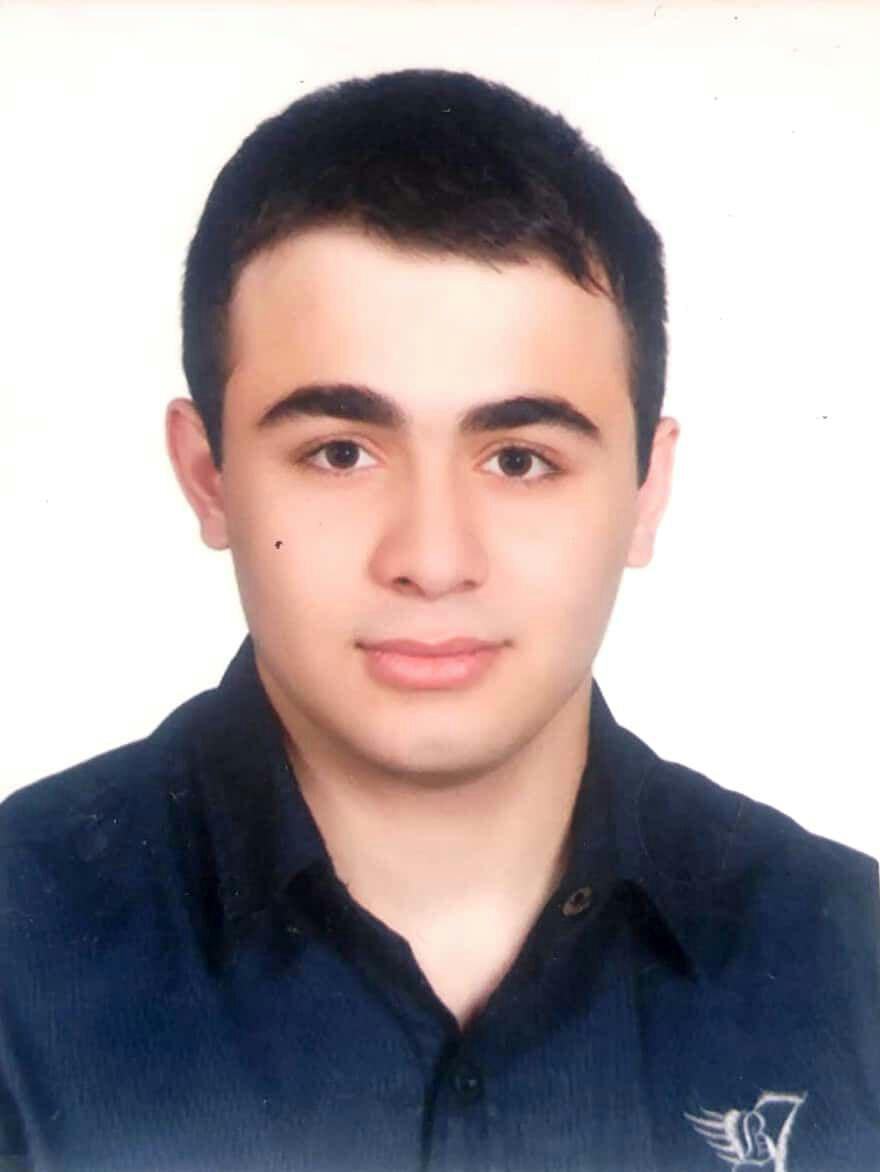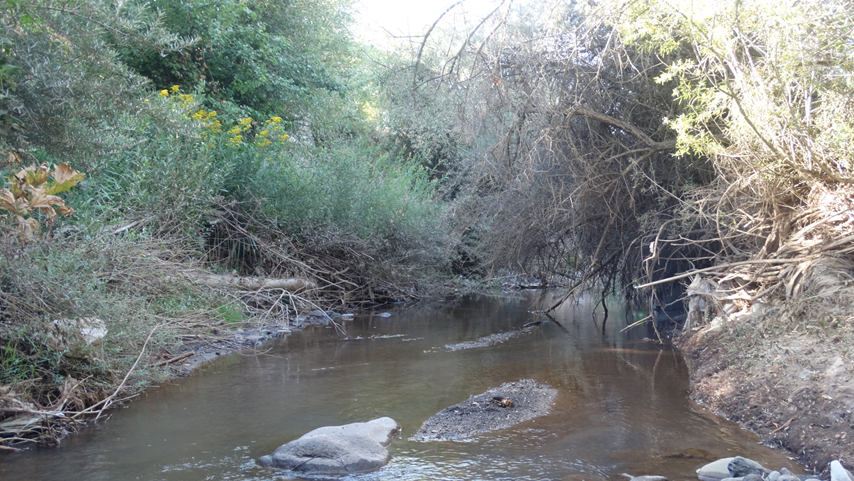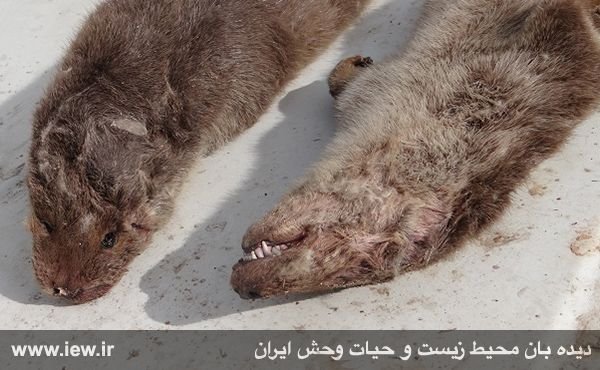IUCN/SSC Otter Specialist Group Bulletin

©IUCN/SCC Otter Specialist Group
Volume 35 Issue 3 (October 2018)
Citation: Mohtasebi , S and Tabatabaei, F (2018). Evidence of the Presence of Lutra lutra in Taleqan, Alborz Province, Iran . IUCN Otter Spec. Group Bull. 35 (3): 156 - 158
Evidence of the Presence of Lutra lutra in Taleqan, Alborz Province, Iran
Sina Mohtasebi 1 and Farbod Tabatabaei2
1 Department of Medical Parasitology and Mycology, Tehran University of Medical Sciences. ysina.mohtasebi@gmail.com
2 School of Allied Medical Sciences, Iran University of Medical Sciences
Received 15th October 2018, accepted 31st March 2018
Abstract: Little information is available for the Eurasian otter (Lutra lutra) in Iran. According to previous data in national environmental organization of Iran, they are distributed near rivers and water source of northern, north eastern provinces and some areas of southern provinces. Their population is decreasing due to environmental hazards.
INTRODUCTION
The Eurasian otter (Lutra lutra) and the smooth-coated otter (Lutragale perspicillata) are the two otter species occurring in Iran (Tajbakhsh, 1995). Like in other countries, Lutra lutra has an aquatic life-style in Iran. They can be found in wet lands and rivers of Mazandaran, Azarbayejan, Tehran, Kordestan, Kermanshah, Markazi, Isfahan, Khorasan, Chaharmahal-Bakhtiari, Fars, Khozestan, and Lorestan provinces (Etemad, 1978).
They mostly feed on aquatic animals and fishes (Macdonald, 2006). In recent years, their population has been declining. Drought and loss of water sources, starvation and the contamination of their life environment such as entrance of agricultural residues in rivers and lakes are the major reasons of their population decrease. Also farmers hunt them while they enter their gardens and fish farms (Macdonald and Mason, 1983; Mason and Madsen, 1993) . Therefore, Lutra lutra is an endangered mammal in Iran. Previously distribution of otters in Iran has been studied in some areas (Karami et al., 2006; Ziaie and Gutleb, 1997) but, the presence of otters in many areas of Iran is still unknown.
REPORT
Taleqan is a rural area located in mountains of Alborz province at the height of 1820 meters above sea level with a cold climate. Some areas have been remained wild and unaffected from human alterations. Some rare and endangered mammals like the Persian leopard (Panthera pardus saxicolor), brown bear (Urus arctos) and Eurasian otter (Lutra lutra) have been observed recently.
An adult Lutra lutra was observed in the Kulej River of Taleqan (36°11′12″N 50°45′40″E) in autumn 2015 (Fig. 1). At this location they feed on fishes, crustaceans and rodents. Cyprinidae fishes like Capoeta gracilis and Barbus cyri are the most common fishes in the river. It seems that the major part of their diet is depending on this family of fishes (Fig. 2).

On January 2014, two corpses of Lutra lutra were found in a fish farm pond in Hasan Jun village 36°13′00″N 50°45′00″E and confirmed as being Lutra lutra by the environmental officers in Taleqan. The reason of death was hypothermia (Fig. 3).
REFERENCES
Etemad, E. (1978). Mammals of Iran. National Society of Natural Resource and Human Environment Protection. Publication of Tehran. [In Farsi].
Karami, M., Mirzaei, R., Hamzehpour, M. (2006). Status of Eurasian otter (Lutra lutra) in Iran. IUCN Otter Spec. Group Bull. 23: 27-33.
Macdonald, D. (2006). The encyclopedia of mammals. Oxford University Press.
Macdonald, S., Mason, C.F. (1983). Some factors influencing the distribution of otters (Lutra lutra). Mammal review. 13: 1-10.
Mason, C.F., Madsen, A. (1993). Organochlorine pesticide residues and PCBs in Danish otters (Lutra lutra). Science of the Total Environment. 133: 73-81.
Tajbakhsh, H. (1995). Hunting in Iran-from the beginning until today. The Museum of Natural Traditions and Wildlife of Iran, Tehran, Iran[In Farsi with English summary].
Ziaie, H, Gutleb, B. (1997). New comments on otters in Iran. IUCN Otter Spec. Group Bull. 14: 91-92
Preuve de la Présence de Lutra Lutra à Taleqan, Province d’Alborz, Iran
Peu d’informations sont disponibles sur la loutre eurasienne (Lutra lutra) en Iran. Selon ces données venant de l’organisation environnementale nationale d’Iran, elles sont localisées près des rivières et ressources en eau des provinces du nord, du nord-est et par endroits dans les provinces du sud. Leur population est en décroissance en raison de risques environnementaux
Revenez au dessus
Resumen: Evidencias de la Presencia de Lutra Lutra en Taleqan, Provincia de Alborz, Irán
Hay disponible poca información sobre la nutria euroasiática (Lutra lutra) en Irán. De acuerdo a datos previos de la organización nacional ambiental de Irán, están distribuuidas cerca de los ríos y fuentes de agua de las provincias del norte y noreste y algunas áreas de las provincias del sur. Su población está disminuyendo debido a amenazas ambientales
Vuelva a la tapa



